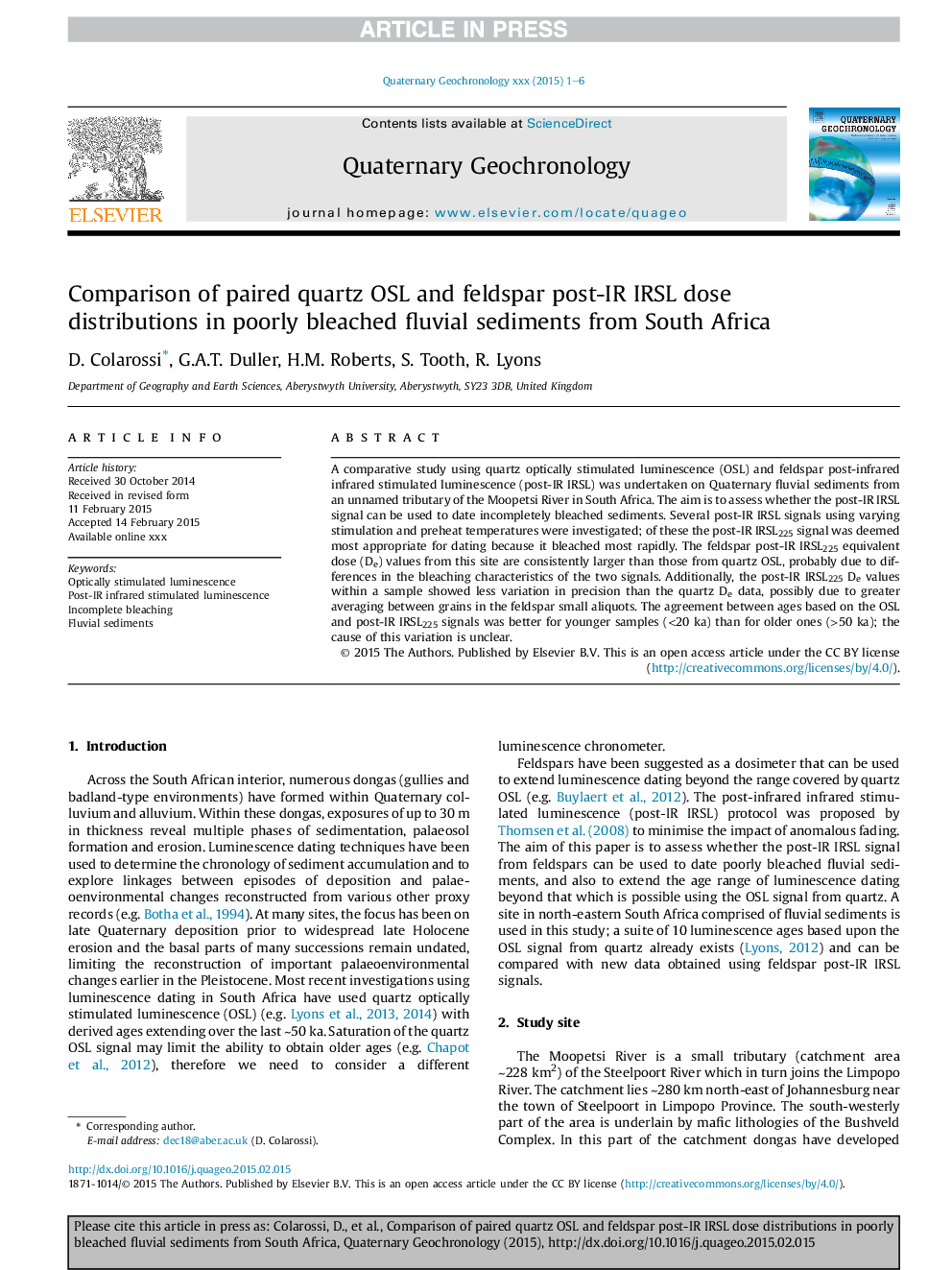| Article ID | Journal | Published Year | Pages | File Type |
|---|---|---|---|---|
| 6442549 | Quaternary Geochronology | 2015 | 6 Pages |
Abstract
A comparative study using quartz optically stimulated luminescence (OSL) and feldspar post-infrared infrared stimulated luminescence (post-IR IRSL) was undertaken on Quaternary fluvial sediments from an unnamed tributary of the Moopetsi River in South Africa. The aim is to assess whether the post-IR IRSL signal can be used to date incompletely bleached sediments. Several post-IR IRSL signals using varying stimulation and preheat temperatures were investigated; of these the post-IR IRSL225 signal was deemed most appropriate for dating because it bleached most rapidly. The feldspar post-IR IRSL225 equivalent dose (De) values from this site are consistently larger than those from quartz OSL, probably due to differences in the bleaching characteristics of the two signals. Additionally, the post-IR IRSL225 De values within a sample showed less variation in precision than the quartz De data, possibly due to greater averaging between grains in the feldspar small aliquots. The agreement between ages based on the OSL and post-IR IRSL225 signals was better for younger samples (<20Â ka) than for older ones (>50Â ka); the cause of this variation is unclear.
Related Topics
Physical Sciences and Engineering
Earth and Planetary Sciences
Geochemistry and Petrology
Authors
D. Colarossi, G.A.T. Duller, H.M. Roberts, S. Tooth, R. Lyons,
